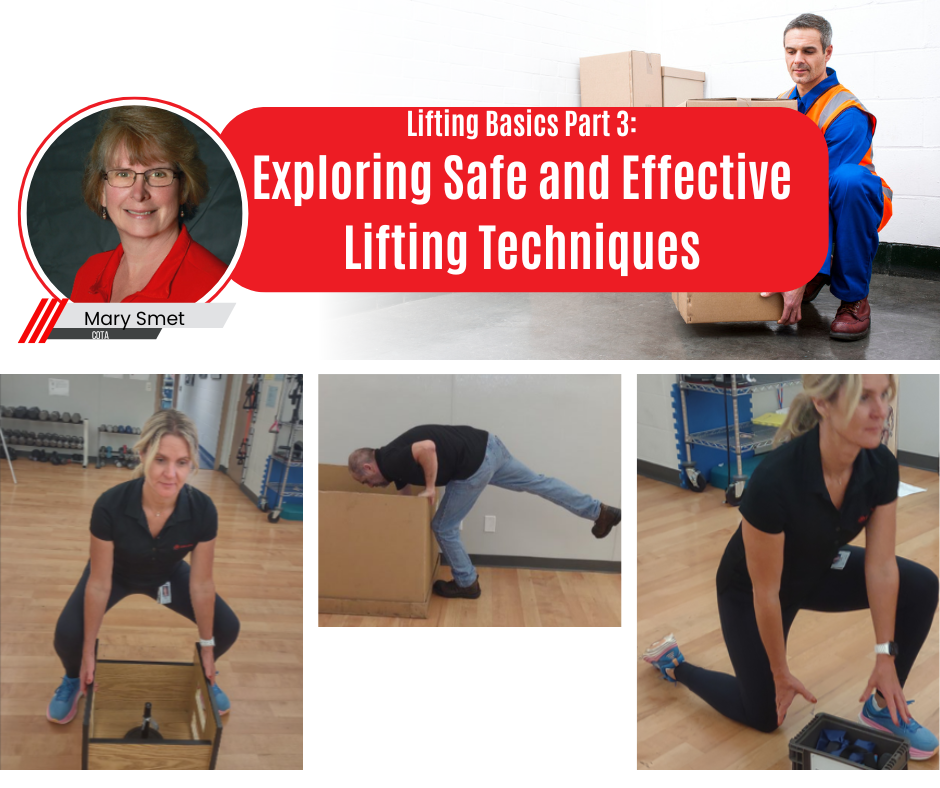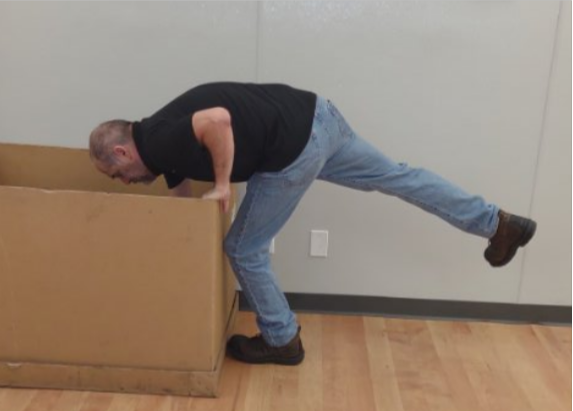Lifting Basics Part 3: Exploring Safe and Effective Lifting Techniques
Proper lifting techniques prevent injuries and keep workers safe. In this blog, we’ll explore different ways to plan, approach, and execute a lift with proper ergonomics to help you decrease your risk of injury. But first, let’s debunk some common myths about lifting.
Myths About Lifting
There are a few popular myths about lifting that can be confusing. For example, many people think that bending their knees is the only thing they need to do to lift safely. While it’s helpful, there’s more to good lifting form than just bending your knees.
Another myth is that lifting only heavy objects can cause injury, but good technique is essential regardless of the weight.
Finally, some people believe that wearing a weight belt or back brace makes lifting risk-free. While it can provide support, it’s still important to use proper lifting techniques and build muscular strength and endurance to improve muscular resilience.
Now that we have cleared the air let’s apply the general principles discussed in the previous blog, “Safe Lifting Practices All Workers Should Know,” and review some lifting techniques we’ve successfully implemented at our onsite partners to keep workers with various job responsibilities safe.
Squat Lift
You are tasked with moving several boxes from the floor to a different area of the facility. You are told that the box is within your facility's lifting limits, and you should be able to perform this task safely. The box has no handholds, so your only option is to get your hands and arms under it as you lift it from the floor.
For this scenario, we recommend using a squat lift sequence.
Here’s what you need to know:
Stand in front of the load with your feet apart and spread further apart than the object lying on the ground.
Squat by bending at the knees and hips while keeping your back flat.
Grab the object by holding it as close to your body as possible.
Push your heels through and stand up using your leg muscles. Your hips and shoulders should rise at the same time.
Keep your core tight and head forward throughout the lift.
Golfer’s Lift
You are walking through the factory and notice a few loose nuts and bolts at the bottom of a box. It’s a pretty deep reach, so you need extra support to reach the bolts in the corner. The box is sturdy enough for you to brace against.
We recommend using a Golfer’s Lift since the objects are light, and you can hold onto/brace against something.
Here’s how to do it:
Keep your back straight and bend the frunk forward while raising one leg towards the back of the room.
The knee supporting your weight should slightly bend and maintain contact with the box.
Use your knee and non-reaching hand to help keep you balanced.
Lift yourself back up by bringing the leg in the air forward to its initial position.
Bin Lift
You are removing parts from a large transportation container. The top few rows are easy, but the bottom few rows require more range of motion and effort to complete the lift. Eventually, you catch yourself hunched over the bin and find your back and neck poorly positioned.
For this type of lift, we recommend a Bin Lift.
Here’s what you need to know:
Stand in front of the load with your feet apart.
Lean forward into the box by bending at the knees and hips while keeping your back straight.
Grab the object and bring it as close to your body as possible.
It’s important to look in front of you to keep the neck neutral and back straight.
Squeeze your core and glutes as you stand tall with the object, keeping the object as close to you as possible.
*Pro Tip: Cutting down the edge of the box and raising it to a better working height may help decrease the strain of the lift. Remember, work smarter, not harder.
Half-Kneeling Lift:
You are moving a stack of small but heavy boxes. You reach a point where you lack the range of motion to do a Squat Lift, and the box is too heavy and awkward to do a Golfer’s Lift.
We recommend a half-kneeling lift to help you maintain strength and balance when moving this type of box.
Here’s how:
Place your legs in a stepping position (forward lunge), then bend your knees to grab the object.
Keep your back straight and lift the box by driving your front heel and back foot through the floor to achieve a standing position.
*Pro Tip: Use the half-kneeling position to lift the box to a bench, stand up, then use a squat lift to pick the object up from a bench. That way, you don’t have to worry about adjusting mid-lift.
In summary, it’s essential to think before you lift. Take a minute to consider the weight of the box or part, the job requirements, and your physical strengths and weaknesses. Think about which type of lift will be most safe and practical. Then, execute your plan. Remember to warm up and cool down and practice safe lifting habits.
Follow along in Part 4 as we review how to safely and effectively move boxes or parts around within your workstation.
_________
What if your parts, bins, and areas are not set up to allow you to utilize these lifting techniques?
Don’t worry— we’re here to help! Our ergonomic specialists provide on-site ergonomic training to ensure workers have the tools and proper training to thrive throughout the day.
Contact us so we can learn more about your unique situation.





